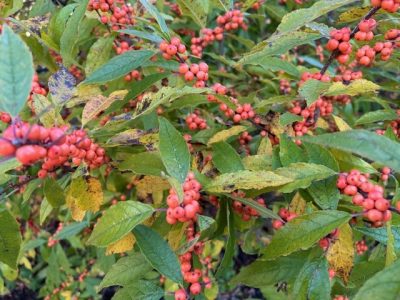Nick Goltz, DPM, UConn Home & Garden Education Center, UConn Plant Diagnostic Lab
When I moved to Connecticut in July of 2021, I remember driving through neighborhoods looking for somewhere I might eventually want to live and being struck by the beautifully-landscaped yards that each home seemed to showcase. I particularly remember being impressed by the tidy hedges of hydrangea, filled with lush globes of blue, pink and purple flowers. Can you think of a flower more emblematic of breezy, long summer days by New England coast than the hydrangea? I’ll wait.
Hydrangeas are a fascinating group of perennial plants with some unique quirks that make them a fun addition for the home garden. The genus is native to Asia and North America, but the species grown most commonly around the world, Hydrangea macrophylla, is native to Japan and has been bred extensively for hundreds of years, resulting in many cultivars. They are also bred with other species to help select for cold tolerance or inflorescence (flower cluster) shape.
Hydrangea macrophylla are commonly known as “bigleaf hydrangea”, but may also be called “lacecap” or “mophead” hydrangea, depending on the shape of the cultivar’s inflorescence. While many species of hydrangeas have white flowers, bigleaf hydrangeas are prized for their beautiful inflorescences that act as a natural pH indicator of the soil the plants grow in. The petals of flowers will change depending on how basic or acidic the soil is. Flowers will be blue, indigo, or deep purple in acidic soils with a pH of 5.5 or less. Plants gown in a slightly acidic soil with a pH between 5.5 and 6.5 will have a mix of purple hues. Hydrangeas grown in neutral to basic soils with a pH greater than 6.5 (especially 7 and up) will generally have fuchsia to pink-colored flowers. Many gardeners will amend the soil of their hydrangea beds from year to year to achieve the color that they hope for.
Many folks know of the color-changing capabilities of hydrangeas, but keep reading for a few tips on how to properly care for them beyond adjusting soil pH. Hydrangeas prefer moist, well-draining soil and a sheltered spot with partial shade. Some cultivars tolerate full sun well, but must be watered consistently to look their best. Hydrangeas do not grow exceptionally large and are considered “low fire risk”, so are a better choice for planting near the home.

There’s a reason why coastal New England towns seem to be filled with hydrangeas while interior towns, particularly for our friends in Vermont, western Massachusetts, Maine, and New Hampshire, have fewer. Bigleaf hydrangeas can tolerate cold temperatures, but only to an extent. Depending on the cultivar, bigleaf hydrangeas grow best from zones 6 to 8. Most cultivars will survive zone 5 winters, but might not flower well without protection – harsh winter temperatures, especially when paired with low snow cover, can kill flower buds.
Flower buds form on old growth for most cultivars of bigleaf hydrangea. Because of this, many folks will accidentally prune away flower buds in winter, resulting in poor flower production come summer. For this reason, it’s important to never prune bigleaf hydrangea in fall, winter, or spring. Only prune away the bare stems from the previous year when you see that no new growth is being produced from them, or in summer when collecting flowers for the vase on your kitchen table!
If you find the twiggy winter appearance unsightly and can’t help but prune, if you struggle with deer feeding, or if you live in an area with common late spring frosts, consider planting a “reblooming” bigleaf hydrangea. There are a few cultivars, such as ‘Endless Summer’ and sports, that will produce flower buds on old growth and (usually) a second flush on new growth. Alternatively, you could plant other species of hydrangeas, such as smooth hydrangea (Hydrangea arborescens), or panicle hydrangea (Hydrangea paniculata), which tend to be a little more cold-hardy, or oakleaf hydrangea (Hydrangea quercifolia), if you’re looking for a hydrangea for an area with very hot summers.
If you have questions about growing hydrangeas, or any other gardening topic, call the UConn Home & Garden Education Center (toll-free) at (877) 486-6271. You can also email us at ladybug@uconn.edu, visit our website, www.homegarden.cahnr.uconn.edu, or visit your local UConn Cooperative Extension center.
This article was published in the Hartford Courant and The Westerly Sun July 5, 2025




